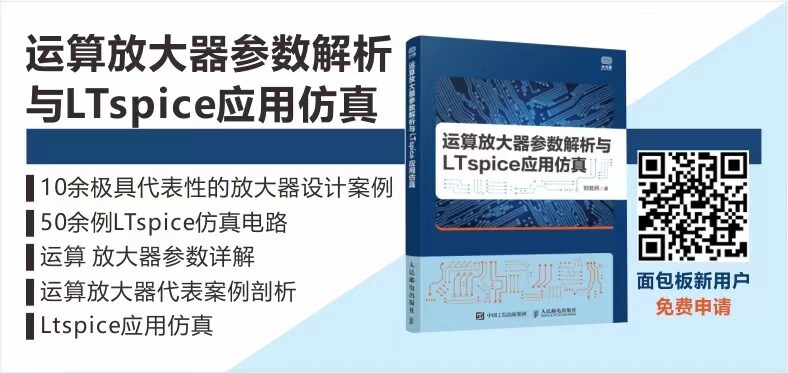
—— [Introduction] ——
This article discusses the application and design ideas of low-power wide-area IoT technology in different scenarios, aiming to provide a practical judgment on the maturity of low-power wide-area IoT technology, the selection of application scenarios, and its importance in the field of IoT technology.
1. Background

This article discusses the application and design ideas of low-power wide-area IoT technology in different scenarios, aiming to provide a practical judgment on the maturity of low-power wide-area IoT technology, the selection of application scenarios, and its importance in the field of IoT technology.
2. Case Sharing

The attractiveness of low-power wide-area IoT technology to the industry is reflected in: a large number of connections, low power consumption, wide coverage, and strong penetration. The last paragraph of this article also provides actual test data for LoRa for reference. As for NB-IoT, it has only been tape-out, and chip-level testing will have significant discrepancies with practical applications, so test data cannot be provided at this time.
Case 1 – Outdoor Cable Theft Detection
-
Customer Requirements:
1) During road construction, cables are easily cut.
2) Detection of cable theft behavior.
3) Water accumulation in cable trenches leading to electrical accidents.
-
Design Plan:
1) Place temperature sensors, water immersion sensors, and vibration sensors in each cable trench.
2) Use LoRa nodes to collect these three types of sensors, employing bidirectional communication with the LoRa gateway.
3) Battery-powered, with a 3-year power supply target.
4) Exposed antenna design, transmission distance of 1.5Km-2Km.
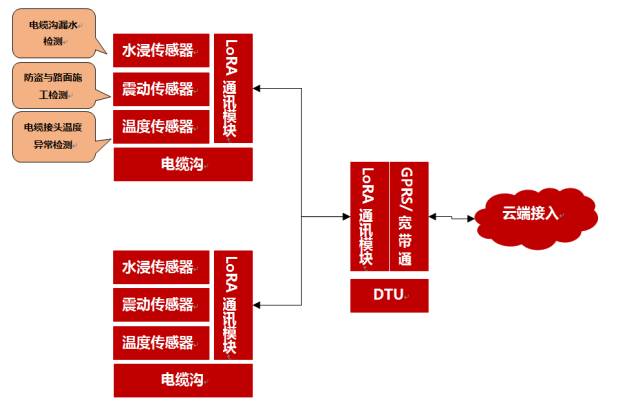
Case 2 – Power Failure Indicator (Remote Area)
-
Customer Requirements:
Remote detection of power transmission and distribution network failure indicators.
-
Design Plan:
Power failure indicators are commonly used devices in power transmission and distribution, but they usually rely on power optical cables or special communication channels for transmission. However, in remote areas, current communication methods do not meet the requirements.
Using NB-IoT as the communication carrier protocol can increase coverage, while a star network topology allows data to connect directly with the power grid control center, making installation, communication, and protocol development relatively simple.
Case 3 – Flood Detection
-
Customer Requirements:
Urban rainfall detection and flood monitoring point water level detection.
-
Case Design
Water level detection + LoRa + bidirectional configurable function.
Through bidirectional configuration, low-frequency detection transmission is used in non-flood periods, while configurable high-frequency transmission is used during flood periods.
Pipeline Leak Detection
-
Customer Requirements:
Leak detection at important points in the pipeline network.
-
Case Design
Leak detection + LoRa + exposed antenna + low-frequency transmission.
Low-frequency transmission helps extend device power supply time, while exposed antennas enhance transmission distance.
Remote Water Meter Reading
-
Customer Requirements:
Remote reading of water meters.
-
Case Design
Water level detection + NB-IoT.
The transmission distance of NB-IoT and the support from operators can facilitate the rapid deployment and application of water meters in a city.
Low-Power Positioning Technology (Shared Bicycles)
In wireless sensor networks, common methods for measuring node distances include TOA (Time of Arrival), TDOA (Time Difference of Arrival), ultrasound, RSSI (Received Signal Strength Indicator), and TOF (Time of Flight).
1) TDOA Positioning
LoRa positioning can be achieved through LoRaWAN gateways, which can share an accurate public time reference, adding high-resolution timestamps to each received LoRa packet. Each base station reports the arrival time and supported metadata, allowing the location resolver to determine the terminal node position based on the time difference of arrival (TDOA) algorithm.
TDOA positioning is a method that utilizes time differences for localization. By measuring the time it takes for a signal to arrive at monitoring stations, the distance to the signal source can be determined. By using the distances from the signal source to each monitoring station (with the monitoring station as the center and the distance as the radius), the signal’s position can be pinpointed. However, absolute time is generally difficult to measure; by comparing the time differences of the signal arriving at various monitoring stations, a hyperbola can be created with the monitoring station as the focal point, and the intersection of the hyperbolas indicates the signal’s position.
The TDOA algorithm is an improvement over the TOA algorithm; it does not directly use the signal’s arrival time but instead determines the mobile station’s position using the time differences of signals received by multiple base stations. Compared to the TOA algorithm, it does not require specialized timestamps, and the positioning accuracy is improved.
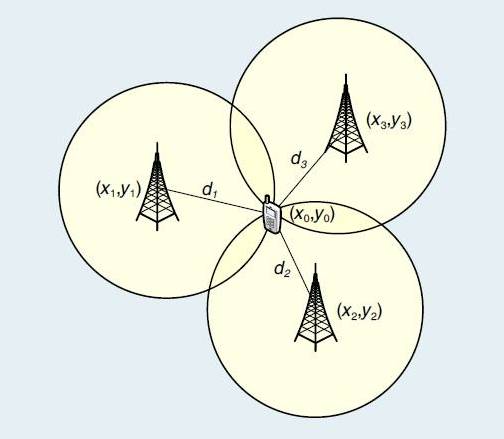
Figure: TDOA Positioning
2) RSSI Positioning
Currently, the Semtech SX1278 series of LoRa spread spectrum chips have the capability to set transmission power, allowing for positioning using signal strength methods. The principle is as follows:
P = P0 + 10n log10(d/d0)
Where P is the signal strength received by reference point A from the measured point T (known);
P0 is the signal strength received by reference point A from a signal sent from a distance d0 (known);
d is the distance between reference point A and measured point T (unknown);
d0 is the distance between reference point A and reference point B (known);
n is the environmental factor (unknown).
To better adapt to different environments, the reference parameters P0, d0, and n are dynamically corrected, where: P0 is the signal strength received at reference point A from reference point B, which sends signals at the same power as measured point T (known);
d0 is the distance between reference point A and reference point B (known);
n is calculated by measuring the signal strength Pab, Pac, Pbc between reference points A, B, and C, and averaging the three environmental factors n1, n2, n3.
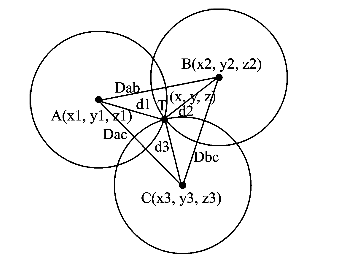
Figure: RSSI Positioning
3) NB-IoT Positioning
NB-IoT R14 will complete standard freeze by September 2017, with the hope of achieving positioning accuracy below 50 meters. However, due to the complexity of urban environments, the positioning accuracy of NB-IoT will greatly degrade. Even if the planned goal of achieving positioning accuracy below 50 meters is met, NB-IoT cannot be used to locate shared bicycles.
Within a 50-meter line of sight range, there may be multiple shared bicycles, and users cannot determine which one is their reserved vehicle. The platform also cannot accurately manage each bike. Therefore, it is necessary to use centimeter-level positioning tools like GPS or Beidou to perceive location information, while NB-IoT assists in positioning and carries the function of transmitting location information. However, using GPS or Beidou will significantly increase the power consumption of the bike lock, greatly reducing battery life.
Recently, there have been reports of China Telecom and ofo conducting research on NB-IoT positioning for shared bicycles, which illustrates the feasibility of low-power positioning technology. However, it should also be understood that commercial use of NB-IoT positioning still requires time.
4) Shared Bicycle Solution
LoRa positioning + inertial sensors: Deploy LoRa base stations at urban shared bicycle locations, using mobile GPS to track riding trajectories, while LoRa performs static location positioning, and inertial sensors provide relative position tracking after return and mobile alarm functions.
3. LoRa Module Communication Ability Testing

This article tests relatively mature LoRa modules available in the market.
Scenario 1 – City Building

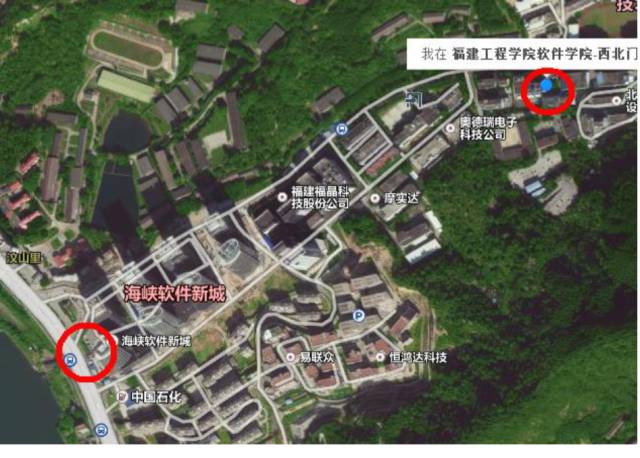
Scenario 2 – No Obstructions

Test Results
The 500mW LoRa module begins to show increased packet loss rates at distances of 1.5-2km. Although packets are sent every second, the receiving frequency is only 2-3 times every 10 seconds.
Conclusion

In terms of market and technological maturity, LoRa is more mature and flexible for networking, making it more suitable for the continually emerging IoT application scenarios. NB-IoT still has a way to go before commercialization.
As the market matures, LoRa has greater advantages over NB-IoT for small and medium-sized individual customers, and is not limited by geographical location or customer attributes; NB-IoT, supported by operators, can quickly roll out an industry in a particular city.
Source: “IoT Business Design and Cases”
Author: Xu Xiaogang
